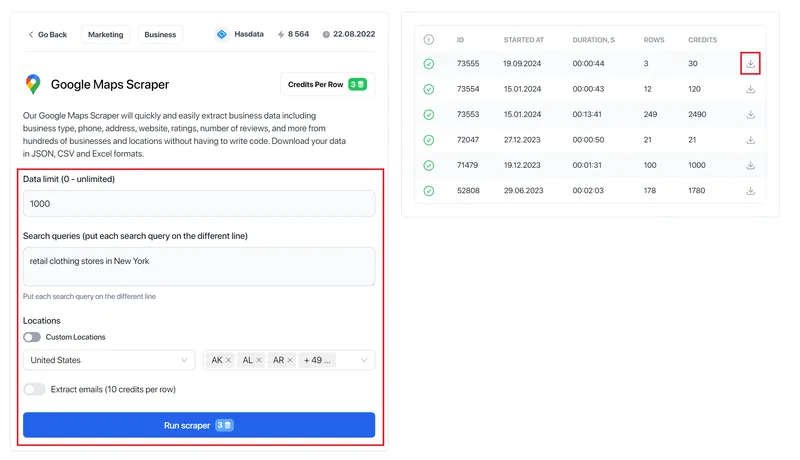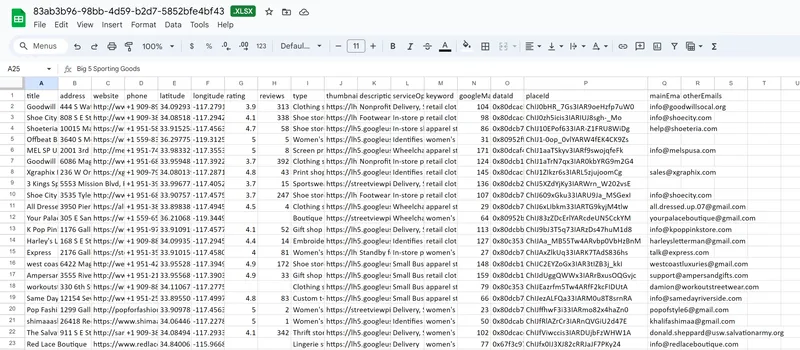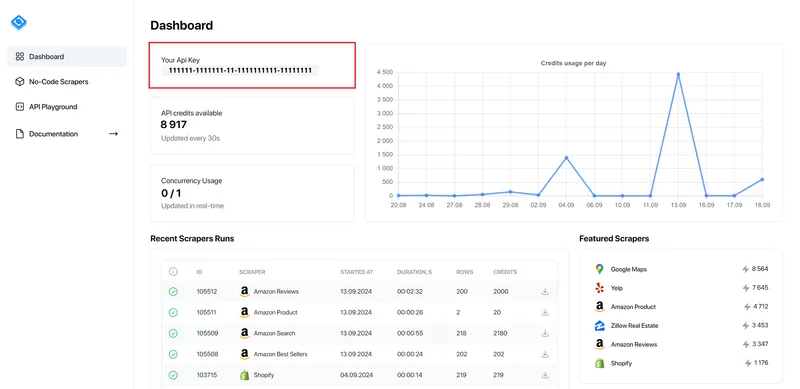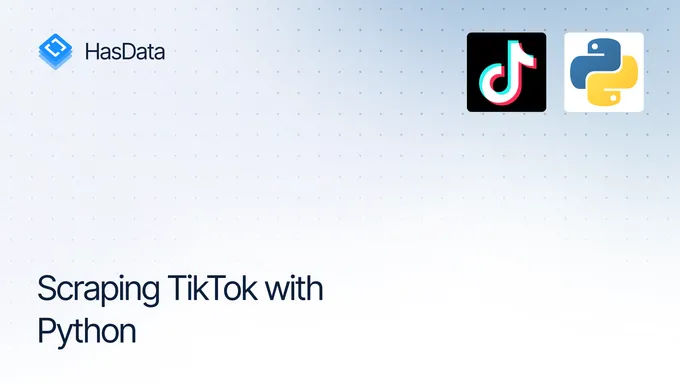Easy Way to Get an Up-to-Date List of Retail Clothing Stores
The retail clothing market is highly dynamic, with trends and top-performing stores constantly evolving. Considering how quickly trends shift, traditional “best-of” lists quickly become outdated. According to Statista, U.S. women’s clothing sales reached approximately $40.5 billion in 2022, with the overall market valued at around $160 billion. Monthly sales continued this upward trend in 2023, reaching nearly $21 billion in February alone — an $800 million increase compared to the previous month.
In this fast-paced environment, access to real-time data on clothing stores is essential for tasks like discovering new sales channels, conducting competitive analyses, and shaping marketing strategies. Instead of providing a static list that quickly becomes irrelevant, this article will show how to efficiently collect up-to-date information on clothing stores using web scraping techniques and platforms like Google Maps.
This approach is not only suitable for experienced developers but also accessible to those who may not know how to code. By using user-friendly no-code scrapers, anyone can gather the necessary data and stay informed about the latest trends in retail.
How to Find the Best Clothing Stores for Your Needs
Finding the top clothing stores is relatively easy. There are several methods to achieve this, each with its benefits and drawbacks.
One option is to purchase pre-made lists. However, these lists often suffer from outdated or inaccurate information, and reliable, up-to-date databases can be costly. If budget constraints or data accuracy are concerns, this may not always be the best choice.
Alternatively, compiling your own list is a practical and surprisingly simple option. By gathering the information yourself, you can ensure it stays up-to-date and accurate. We’ll walk you through the steps to help you create your list efficiently and with ease.
You can use various platforms to find information about clothing stores. The most popular and most accessible tool is Google Maps. It provides helpful information, including store locations, contact details, hours of operation, and customer reviews. Using Google Maps can make the data collection easier and help you find reliable information.
In summary, while buying pre-made lists can be convenient, creating your list using tools like Google Maps Scraper can give you better accuracy and control, leading to better results for your needs.
Why Use Google Maps for Retail Store Data
As mentioned, Google Maps is one of the most widely used and accessible data sources for millions of stores worldwide. It offers a lot of valuable details, such as store locations, operating hours, contact numbers, customer reviews, and ratings.
With this information, you can quickly sort and organize your list of clothing stores based on what matters most to you, whether it’s store ratings, locations, or other specific criteria. Google Maps makes it simple to find precisely what you need.
Scraping Retail Clothing Stores
To provide a complete example, let’s look at two ways to collect data: Google Maps API and a no-code Google Maps scraper.
Our no-code Google Maps scraper is an easy option for people who don’t know how to code. This tool lets users quickly extract data without any technical hassle. It’s perfect for one-time or occasional data collection tasks, allowing users to focus on their primary goals without worrying about coding.
On the other hand, Google Maps API is designed for developers who want detailed control over how they collect data. It allows them to create a custom scraping tool that fits into their existing workflows. This option is ideal for those who need frequent updates and have the technical skills to build and maintain their solution. With the API, programmers can tailor their requests to get a list of apparel retailers while enjoying real-time updates.
By understanding the pros and cons of each approach, you can choose the best method for you, whether you need customization and control or simplicity and ease of use.
No-Code Scraping Solution for Non-Technical Users
Let’s start with a simpler method that requires no coding skills. We’ll use a Google Maps no-code scraper to extract the data we need and provide it in a convenient format.
To get started, sign up or log in to our website and navigate the ‘No-Code Scrapers’ section. Here, you will find the ‘Google Maps Scraper’, explicitly designed for extracting data effortlessly:

Once you access the scraper’s page, you can input your desired parameters to fine-tune your search. This allows you to specify criteria such as location, data limit, and other relevant filters to ensure you gather exactly the information you need. After setting your parameters, simply initiate the scraping process.

Once the scraper completes the data collection, you will find a list of completed tasks on the right side of your screen. From there, you can easily download the compiled list of retail stores in your preferred format, JSON, CSV, or XLSX, by clicking the download button next to the specific task.

Using this method, you can efficiently gather accurate data on retail stores without the hassle of programming, allowing you to focus on analyzing the data.
However, if you are a programmer or have access to technical resources, you might consider using Google Maps API to create your own data scraping tool. This approach allows for greater customization and control over the data you collect.
Use Google Maps API to Scrape Retail Clothing Store Data
Let’s create a simple data scraping tool. We’ve already covered how to scrape Google Maps using the API so we won’t go into details here. Instead, we’ll look at a practical example. You can find the complete script on Google Colaboratory, where you can view and run it directly.
First, sign up or log in for our website and go to your dashboard. Copy your API key; you’ll need it soon.

Create a new Python file and import the requests library to make API calls and csv library to save the data to CSV file:
import requests
import csvSet your search keyword, like “women’s clothing,” “clothing retailer,” or “clothing brands,” and paste your API key:
query = "retail clothing store in New York"
api_key = 'YOUR-API-KEY'Next, set up the request with the correct headers and make the API call:
url = f"https://api.hasdata.com/scrape/google-maps/search?q={query}"
payload = {}
headers = {
'Content-Type': 'application/json',
'x-api-key': api_key
}
response = requests.request("GET", url, headers=headers, data=payload)After you get the response, you’ll need to parse the data and save it in a format you like. We’ll save it as a CSV file here, but you can also check out our article on working with JSON for other options.
data = response.json()
local_results = data.get('localResults', [])
csv_headers = ['Position', 'Title', 'Place ID', 'Phone', 'Address', 'Website', 'Description', 'Rating', 'Reviews', 'Latitude', 'Longitude']
with open('local_results.csv', mode='w', newline='', encoding='utf-8') as file:
writer = csv.writer(file)
writer.writerow(csv_headers)
for result in local_results:
writer.writerow([
result.get('position'),
result.get('title'),
result.get('placeId'),
result.get('phone'),
result.get('address'),
result.get('website'),
result.get('description'),
result.get('rating'),
result.get('reviews'),
result.get('gpsCoordinates', {}).get('latitude'),
result.get('gpsCoordinates', {}).get('longitude')
])Running this script will give you a list of 20 stores with their details. You can adjust your search query with more parameters or specify a starting position if you need more data. For more detailed information on using Google Maps API, refer to the official documentation.
Alternatives to Google Maps for Retail Data
While Google Maps is one of the most convenient resources for finding retail and online clothing stores, it is not your only option. Platforms like Yelp and Yellow Pages also offer valuable data that can be scraped to create customized lists tailored to your needs.
Yelp is well-known for its user reviews and ratings of local businesses, including clothing stores. Although it mainly focuses on the US and Europe, Yelp also has information from other regions. The large number of reviews on Yelp helps you understand the quality of stores from a customer’s point of view. However, some areas might have limited coverage, and you may not find detailed information about every type of store.
On the other hand, Yellow Pages serves as a traditional directory that provides phone numbers, addresses, and contact information for a wide range of businesses. This platform is particularly useful for locating large, established retailers and national chains. However, finding smaller, independent stores can be more challenging, as they may not be listed in this directory.
Our website offers both a Yelp API and Yellow Pages no-code scraper. These tools allow you to pick the best option for your needs and build a complete and up-to-date database of retail clothing stores. Whether you need reviews or basic contact information, our tools can help make the process easier.
Conclusion and Takeaways
This article explored various methods for creating a custom retail store list, ranging from API integrations to no-code solutions. We demonstrated how to gather data using specialized tools and identified reliable sources for up-to-date information. We also examined the pros and cons of purchasing pre-built lists compared to the benefits of collecting data independently.
Using one source can be helpful, but getting information from multiple sources provides the most accurate and timely results. This approach helps improve the value of the data collected for your business.


